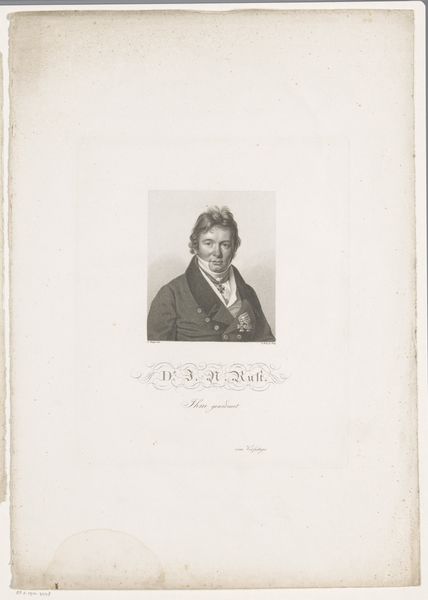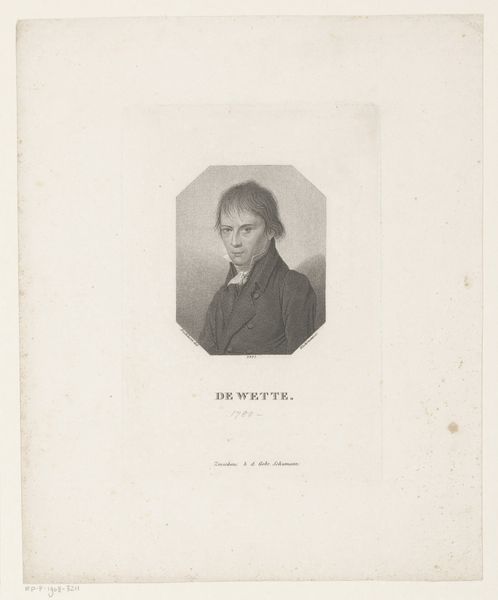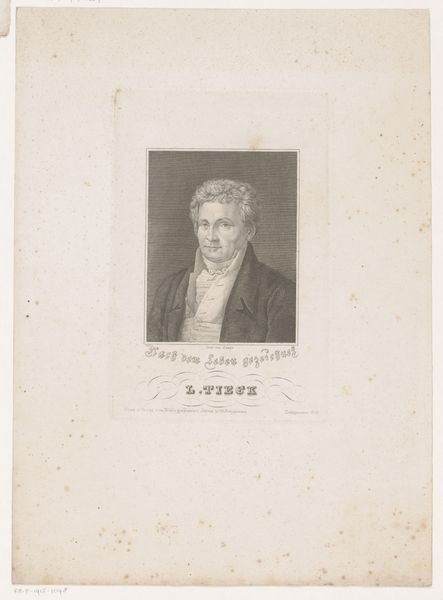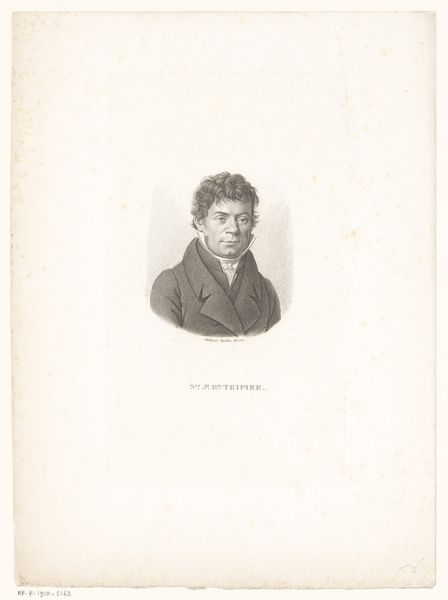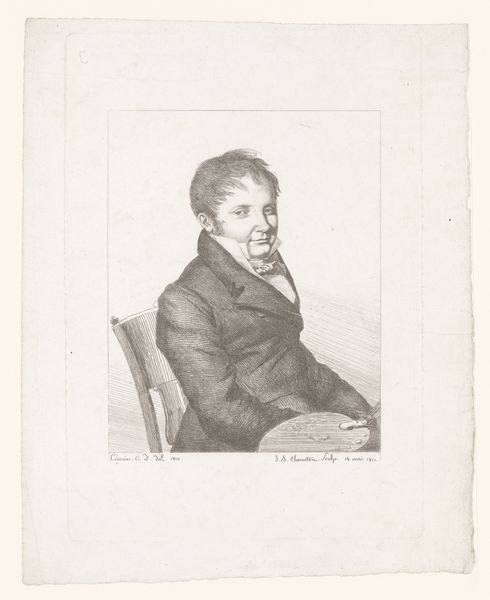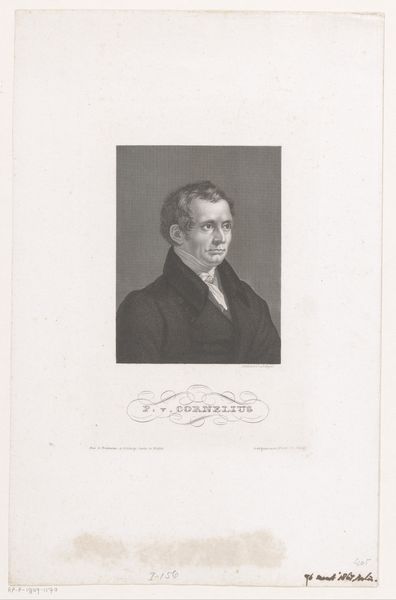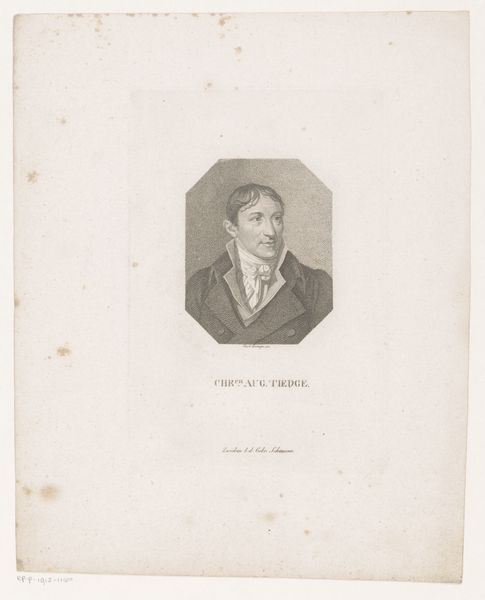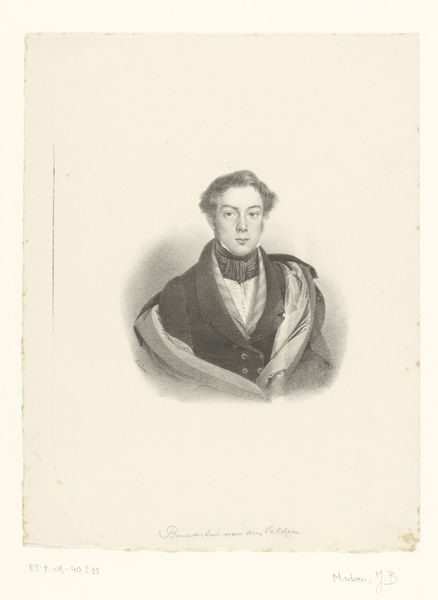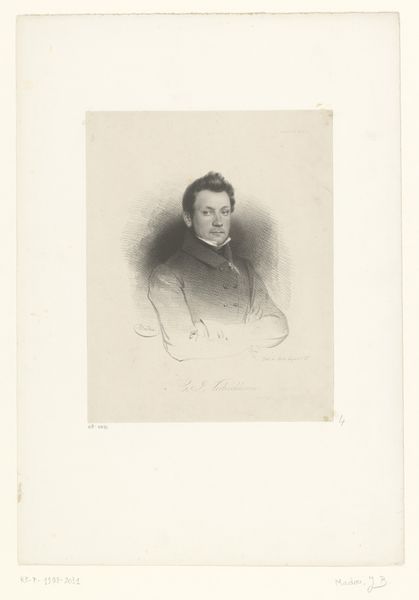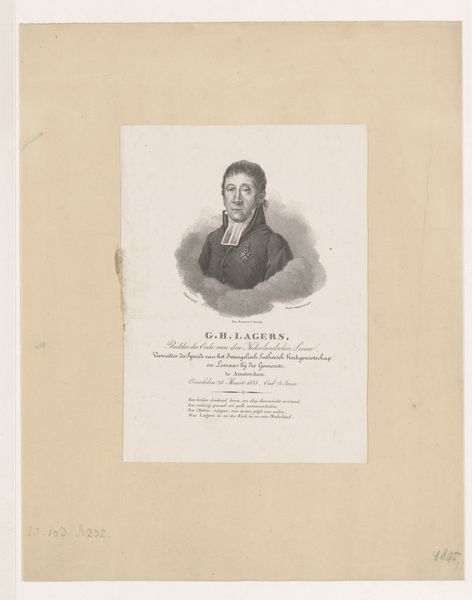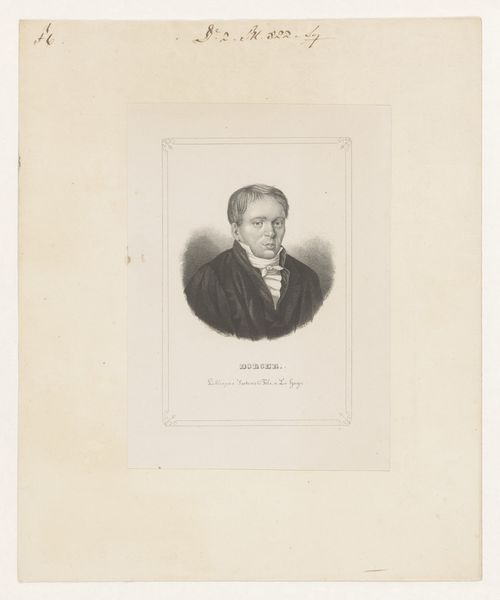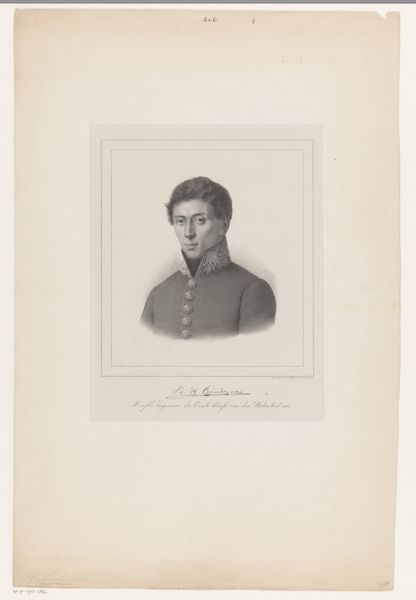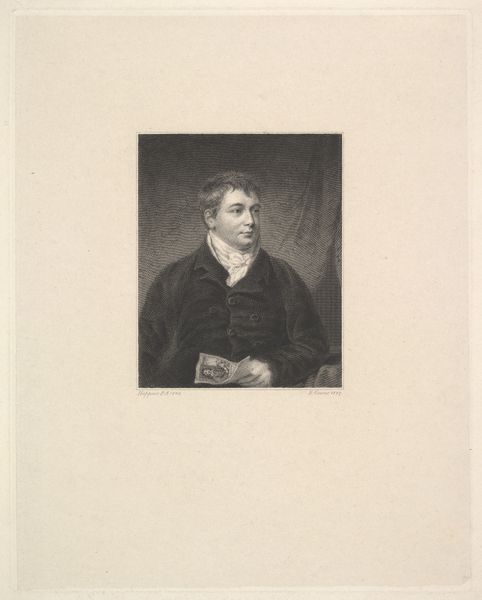
print, engraving
#
portrait
#
neoclacissism
# print
#
history-painting
#
engraving
#
realism
Dimensions: height 216 mm, width 167 mm
Copyright: Rijks Museum: Open Domain
Curator: This is "Portret van Alexandre Pieyre," a portrait engraving by Jean Joseph Mougeot, dating sometime between 1790 and 1850. Editor: Stark! My initial read is the somber tone and formal structure. A very upright and contained feeling radiates from it. Curator: It exemplifies Neoclassical artistic principles with its restrained emotionalism and emphasis on clarity. The engraver, Mougeot, masterfully employs linear precision. Observe how each etched line defines shape, contours, and ultimately, character. Editor: Absolutely. It is undeniably a historical representation of masculinity, likely an elite one. Note the double breasted coat and the carefully arranged cravat around his neck— indicators of wealth. But how does the history-painting element tie in? Curator: Portraiture during the Neoclassical era was intrinsically linked to ideas of virtue and civic responsibility; consider it an aesthetic form molded around philosophical ideals. A history-painting theme suggests the portrayal might embed an allusion to civic engagement or notable contributions of the sitter. Editor: An engraving offers accessible reproductions. How might this contribute to democratizing representation during a time of massive political shifts? Curator: Well, engraving allowed wider distribution and participation, thereby democratizing visibility to some extent— though we cannot ignore the inherent elitism of portraiture during the 18th and 19th centuries, as sitters commissioned their likeness to secure remembrance. Editor: This work really opens a discussion about who gets remembered, represented, and why that continues to hold significance today. Curator: Indeed. Examining this engraving’s visual economy allows us to better dissect what and who was considered valuable at the time, how we interpret it now.
Comments
No comments
Be the first to comment and join the conversation on the ultimate creative platform.
